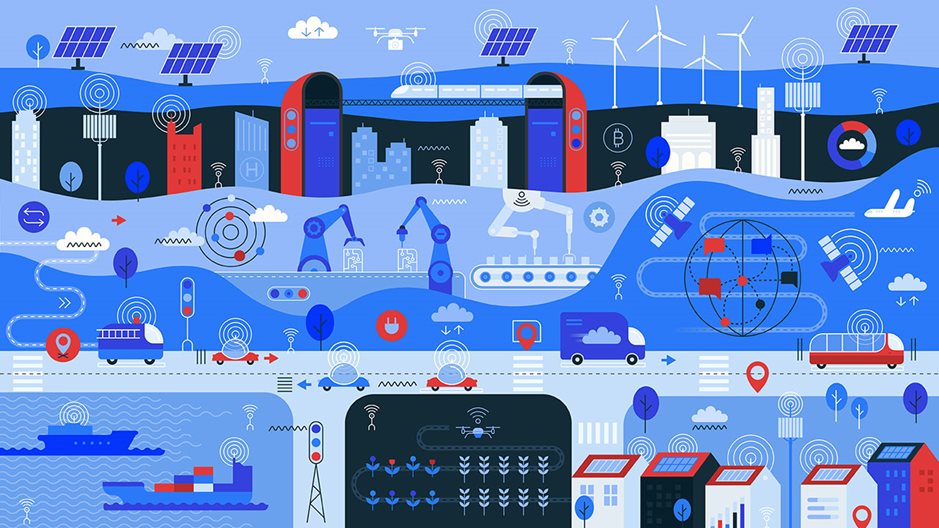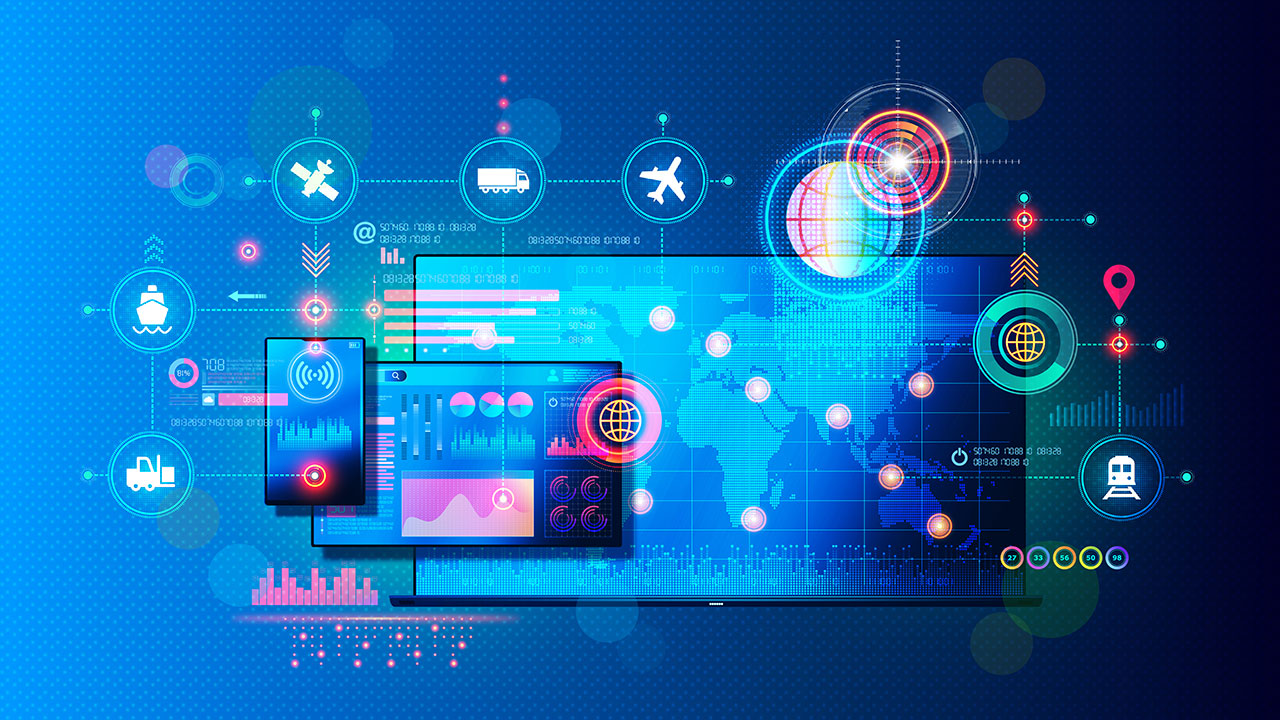On the surface, the most effective way to overcome supply chain disruptions would be to address the root cause. Tackle the disruption itself and the problem disappears, right? But it’s not that simple. More often than not, the issue stems from incidents far outside of the organizations’ control. What businesses can take control of, however, is supply chain data and how it’s tracked.
IoT has become an integral logistics technology in recent years, and though it may not always seem like the obvious solution to disruptions, the real-time tracking and insights it provides can transform how networks handle challenges such as bottlenecks. In this article, we’ll explore why that is, which IoT metrics really matter in the face of disruptions, and practical steps for deploying IoT in supply chains.
Get Our Brief
Learn about remote device management for the IoT
Download PDF
Understanding Supply Chain Disruptions
Supply chain disruptions can cost organizations as much as 45% of their profits over the course of a decade. Managing these challenges more effectively starts with understanding the main causes behind them:
- Market fluctuations: US tariffs on Chinese imports and the recent volatility in fuel prices due to tension in the Middle East have both created supply chain instability. These shifts invariably affect market demand, creating a whiplash effect that shipping volumes from week to week and month to month. At the same time, there are also changing customer expectations to contend with. Buyers want faster turnarounds than ever. This can place undue pressure on the supply chain that then leads to disruptions if not adequately supported with the right technology and strategies.
- Increased compliance pressures: Regulatory demands have gotten far more complex in recent years. Many industries are now required to show full supply chain transparency. Failure to do so can lead to goods being stuck, unable to be delivered, and thus slowing down the rest of the supply chain.
- Natural disasters and outbreaks: 2025 began with the fires in California and an outbreak of bird flu. Both had a major impact on agricultural supply chains and flagged just how damaging these kinds of unforeseen incidents can be.
- Labor shortages: A 2023 survey of 2,000 supply chain executives found that at least 57% were struggling with hiring and retaining qualified workers. Understaffing can cause massive delays, especially in periods when demand is high.

How Real-Time IoT Data Makes a Difference with Supply Chain Disruptions
Looking at the challenges outlined above, it’s not unreasonable to feel that the odds are stacked against supply chain operations. Thankfully, IoT data can help businesses avoid some of these disruptions and respond to others swiftly enough that serious disruption can be mitigated.
The technology does this by improving supply chain visibility and control. Here’s how this makes a difference when it comes to dealing with disruptions:
- Flags risks in real time: Data from IoT devices and sensors can flag early warning signs of disruptions in real time. This gives teams a chance to reroute deliveries and prepare backup plans so that there’s minimal impact on the supply network.
- Improves disruption responses: The impact of a disruption is often determined by how well and how quickly logistics and manufacturing teams respond. IoT provides real-time, accurate data that ensures more informed and effective decision-making in times of crisis.
- Improves equipment reliability: IoT used on transport trucks, in-transit temperature systems, or even warehouse machinery, can track when breakdowns happen or are imminent, and can also be used to alert when servicing is needed so that breakdowns are avoided altogether.
- Lowers fuel usage: Fuel prices have been on a steady rise in the last few years, as have sustainability-related pressures to lower carbon impact. Both of these areas can cause disruptions, which is why IoT’s ability to lower carbon emissions by 50–70 percent is so significant.
By tracking fuel usage and machinery in real time, IoT data can help supply chains see where fuel is being used inefficiently and where they can improve. This then cuts down on fuel costs as well.
- Assists with compliance: The level of transparency and documentation that regulatory bodies require for goods to come into port or be delivered is easier to achieve through the use of IoT.
- Provides data for demand and inventory forecasting: Real-time IoT data gets a second life when combined with predictive algorithms, which take the data and leverage it for forecasting.
- Boosts customer relationships: Sometimes a disruption can’t be avoided, but the impact on customer relationships can. IoT tracking provides organizations with real-time updates that they can then share with customers. This ensures that even if shipments are delayed, customers feel informed.

Which IoT Metrics Really Matter in Supply Chain IoT?
The ability of IoT to capture data is nearly limitless, but these are the metrics that really matter when trying to mitigate supply chain disruptions:
- Asset location and movement: This not only includes GPS locations but also the length of transit and dwell time. This asset tracking ability provides visibility to routing delays and other potential issues.
- Inventory levels: Stocking issues can cause or exacerbate logistics delays. Smart shelves, weight sensors, and other IoT devices can track inventory levels so these issues are prevented.
- Environmental conditions: IoT devices that track environmental monitoring — such as temperature, humidity, or shock — all help to protect sensitive goods.
- Equipment health: IoT systems that monitor vibration and machine diagnostics can track the frequency of failures in machinery, provide early warning signs, and support predictive maintenance.
- Exception alerts: This is perhaps the most important IoT metric because it takes all other data and uses it to flag when things aren’t operating as normal. If transit times take longer than usual or cold chain temperatures rise past set thresholds, the system sends an alert. This helps teams respond to issues before they escalate into full-scale disruptions.
Connecting IoT with Your Supply Chain Systems
 IoT in isolation isn’t nearly as valuable as it is when paired with Inventory Management Systems (IMS) and Transportation Management Systems (TMS). An IMS or TMS will assist in bringing all the data collected by IoT to a central dashboard. This makes it far easier to visualize the supply chain and effectively utilize the information.
IoT in isolation isn’t nearly as valuable as it is when paired with Inventory Management Systems (IMS) and Transportation Management Systems (TMS). An IMS or TMS will assist in bringing all the data collected by IoT to a central dashboard. This makes it far easier to visualize the supply chain and effectively utilize the information.
Practical Steps for Deploying IoT in Logistics
When poorly implemented and utilized, IoT can itself be a cause of disruption. Here’s how to make sure that doesn’t happen:
- Match supply chain goals with appropriate IoT devices and sensors
- Implement a phased roll-out that eases systems into the new technology so that operations aren’t overwhelmed
- Make sure that IoT is integrated with logistics platforms and consider seeking expert assistance to ensure a streamlined process
- Monitor the system constantly to see where adjustments and improvements can be made

FAQ: How the IoT Helps Prevent Supply Chain Disruptions
How does IoT help detect potential supply chain disruptions early?
IoT devices like sensors and GPS trackers provide real-time visibility into goods, vehicles, and infrastructure, enabling early detection of delays, temperature issues, or equipment malfunctions.
What types of data can IoT collect to improve supply chain resilience?
IoT can monitor location, temperature, humidity, vibration, inventory levels, equipment status, and other conditions that impact the movement and quality of goods.
How does IoT improve shipment tracking and logistics efficiency?
IoT-enabled GPS and telematics systems allow real-time tracking of shipments, helping companies reroute around delays and communicate accurate ETAs to partners and customers.
Can IoT help manage inventory more effectively?
Yes, IoT sensors in warehouses and retail locations can monitor inventory levels in real time, helping to prevent stockouts, overstocking, and delays in fulfillment. IoT-powered robotics also increasingly play an important role in managing and moving inventory.
How does IoT enhance cold chain monitoring?
Temperature and humidity sensors ensure perishable goods remain within safe ranges during transport and storage. Alerts are triggered if conditions fall outside of acceptable limits.
What role does predictive maintenance play in preventing disruptions?
IoT devices monitor the health of machinery and vehicles, predicting failures before they happen. This reduces unexpected breakdowns that could halt operations.
Can IoT support better decision-making during supply chain crises?
Yes, by providing real-time and historical data, IoT helps companies make faster, more informed decisions in response to supply chain shocks or bottlenecks.
Is IoT effective in identifying and mitigating supplier-related risks?
IoT helps track supplier performance and environmental conditions, which can reveal early warning signs of delays, quality issues, or compliance failures.
How does IoT support supply chain automation?
IoT devices enable automated inventory management, condition-based alerts, and integration with warehouse and transportation management systems to streamline operations.
What industries benefit most from using IoT to prevent supply chain disruptions?
Industries like retail, manufacturing, pharmaceuticals, food and beverage, and logistics benefit greatly due to their reliance on just-in-time delivery and environmental controls.
Next Steps
About the Author
 Nick Fryer has over a decade of experience in the logistics industry, spanning marketing, public relations, sales enablement, M&A and more at 3PLs and 4PLs including AFN Logistics, GlobalTranz, and Sheer Logistics.
Nick Fryer has over a decade of experience in the logistics industry, spanning marketing, public relations, sales enablement, M&A and more at 3PLs and 4PLs including AFN Logistics, GlobalTranz, and Sheer Logistics.